#human migration out of africa
Text

Early northern Africa dispersal
Populations of Homo sapiens migrated to the Levant and to Europe between 130,000 and 115,000 years ago, and possibly in earlier waves as early as 185,000 years ago.
A fragment of a jawbone with eight teeth found at Misliya Cave has been dated to around 185,000 years ago. Layers dating from between 250,000 and 140,000 years ago in the same cave contained tools of the Levallois type which could put the date of the first migration even earlier if the tools can be associated with the modern human jawbone finds
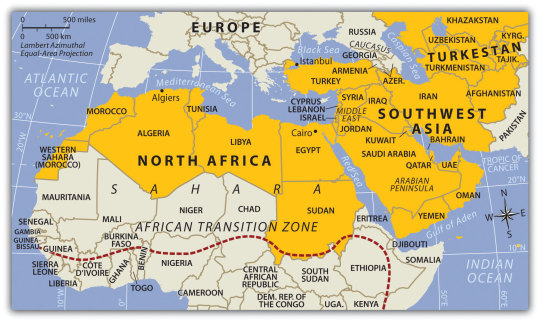
These early migrations do not appear to have led to lasting colonisation and receded by about 80,000 years ago. There is a possibility that this first wave of expansion may have reached China (or even North America )as early as 125,000 years ago, but would have died out without leaving a trace in the genome of contemporary humans

There is some evidence that modern humans left Africa at least 125,000 years ago using two different routes: through the Nile Valley heading to the Middle East, at least into modern Israel (Qafzeh: 120,000–100,000 years ago); and a second route through the present-day Bab-el-Mandeb Strait on the Red Sea (at that time, with a much lower sea level and narrower extension), crossing to the Arabian Peninsula and settling in places like the present-day United Arab Emirates (125,000 years ago) and Oman (106,000 years ago),and possibly reaching the Indian Subcontinent (Jwalapuram: 75,000 years ago.) Although no human remains have yet been found in these three places, the apparent similarities between the stone tools found at Jebel Faya, those from Jwalapuram and some from Africa suggest that their creators were all modern humans.These findings might give some support to the claim that modern humans from Africa arrived at southern China about 100,000 years ago (Zhiren Cave, Zhirendong, Chongzuo City: 100,000 years ago;[note 9] and the Liujiang hominid (Liujiang County): controversially dated at 139,000–111,000 years ago ). Dating results of the Lunadong (Bubing Basin, Guangxi, southern China) teeth, which include a right upper second molar and a left lower second molar, indicate that the molars may be as old as 126,000 years.

Since these previous exits from Africa did not leave traces in the results of genetic analyses based on the Y chromosome and on MtDNA (which represent only a small part of the human genetic material), it seems that those modern humans did not survive in large numbers and were assimilated by our major antecessors. An explanation for their extinction (or small genetic imprint) may be the Toba eruption (74,000 years ago), though some argue it scarcely affected human population



#human migration#out of africa#african#kemetic dreams#afrakan#brownskin#afrakans#africans#brown skin#african culture#ifriqiya#north ifriqiya#western asia#human migration out of africa#egypt#ancient egypt#egyptian#egyptian art#egyptian gods#egyptian history#egyptian mythology#egypt tours#ancient#egyptology#egyptian hieroglyphs#pyramid#giza#mtDna#y chromosome#north america
21 notes
·
View notes
Text
you’re complaining about the timeline contradicting itself every time you look away, i’m taking classes on prehistory, human evolution, and early archaeology all in one semester and am haunted by the implications of ninjago (and it’s multiverse)’s worldbuilding, we are not the same
#let’s be clear here it’s a feature not a bug#both of them#text✨#ninjago#however:#the LOGISTICS. the random immortals. the IMPROBABLE NUMBERS OF SNAKES.#THE ACTUAL REAL ASS FOSSILS THAT EXIST. this is such a rabbit hole and i’m fascinated and tortured by it#obvs it’s 99% magic but it’s so fun to think about. we’re doing human migration out of africa rn and it is both very fun and#very much feeding into my brain worms. i have an entire fic drafted about cole being able to make basic stone tools bc he can identify#sheer points using his powers. as like a last ditch thing.#ITS A HIGHLY SOECIALIZED SKILL WEVE ALMOST COMPLETELY LET DIE OUT it’s so cool#i’m allowed to make ridiculous fandom hcs and fics based on the cool shit i’m learning in my anthropology classes hell yeah. what else do i#use this info for
16 notes
·
View notes
Text
I hold a degree in psychology and I am perplexed by the reasons behind the acceptance of falsehoods propagated by our colonizers by Black Indigenous People. It is disconcerting that many Black individuals residing in America continue to assert their arrival on slave ships, when in fact, we were already present here.
A significant number of Black Americans perceive Native American People as a distinct group separate from Black People. However, it is important to recognize that the Aboriginals are the same individuals who migrated from Africa following the Toba Eruption, subsequently traversing from Africa to Asia, and so forth.
This evidence remains as apparent today as it did 65,000 years ago. By examining the Indigenous People of Andaman Island in India, we can observe the similarities that led Columbus to label the American Indigenous People as "Indians."
Similarly, the Black Australians followed this same route to reach the land that white colonizers falsely claim as their own, despite the fact that Black Indigenous People had inhabited it for 60,000 years prior to any European arrival in the 1700s or 1800s.
We possess evidence of being the first explorers, having reached these lands before any Europeans embarked on their voyages in the 1400s. Therefore, I must once again question my fellow Black individuals: why do you place trust in those who have only caused us harm and perpetuated lies?
#black love#black history#black africans#black positivity#out of africa#the human migration#black indigenous people
0 notes
Text
Okay, I lied. One last post before I take that much needed mental health break.
A post that I always swore - back before you could turn off reblogs and mute comments and basically make the lives of would be trolls very pointless, because you will never see what they say - I would never be stupid enough to make.
I leave you with my essay on…
Why Sparkly Vampires Make Perfect Sense, Stephanie Meyer Just Went About It All Wrong
Let's face it, humans don't always know what we're looking at. As an example, I was reading a book about poison use in royal courts. In the section on cures, in the subsection on unicorn horn (alicorn, for the technical term), it mentioned how the people who procured this rare substance were somewhat baffled by the fact that at the end of their lives the unicorn (which lived in such places as Africa, Persia, India, etc.) would migrate to the far north to die on the beaches of the arctic sea. Now, in their defense, it's very unlikely that any of these individuals would be well traveled enough to have even the opportunity to see both a live unicorn and a dead one. If they had, they might have had an easier time realizing 'these are two different animals!'. But the point still stands.
Humans don't always know what we're looking at.
Now, if you go through folk lore and mythology, you will, of course, find horrible blood sucking fiends that drain innocents of their life. Vampires. You will also find lots of entities which emit an ethereal luminescence or radiant glow, entities which possess powers beyond mortal understanding, who can be benign or terrible, and who are known to abscond with humans, although we're certain these humans are safe and happy on Olympus or under the green hill, not dead like they'd be with those blood suckers.
No one who had not seen both Apollo, God of the Sun, and the horrible vampire who chowed down on the neighbor two doors down would realize: they're the same entity.
To make it even harder for the poor mortals (and easier for the vampires!), vampires look different in different lighting conditions. After all, something that sparkles in the sunlight will also sparkle in the moonlight, the firelight, etc., it's just a matter of degrees. So some vampires would hang out in moonlit glens, for that 'fairy of the moonlight' feel, while others would set themselves up in temples with a many fires as they could manage. I mean, if you're going to call yourself Apollo, God of the Sun, you had better be all sparkle all of the time! Top all of this off with mind reading ability that lets traveling vampires fit into the local not-vampire-vampire mythos and yeah, the humans don't stand a chance.
It's great! Things are wonderful! Even if someone does see you devour a hapless victim and run screaming 'vampire' in the town, you can always just eat them next. No big deal. Only the stupid and careless are in real danger.
And then…
CALAMITY!
The head of the Roman Empire, that militant mass of well armed testosterone (and a bunch of less important people), converts to Christianity and proclaims there's only one god who is…not you.
Well shit.
Of course, if you're a lesser known vampire you can pass yourself off as an "Angel of the Lord" in a quick pinch, as long as you're talking to a peasant who's too illiterate to realize you're lacking in the eye and wing department (good news - this is most everyone), but you can't do that too often. And if everyone knows you as Apollo, God of the Sun?
Sucks to be you. You now have a bunch of very militant fundamentalists armed with sharp, pointy implements of destruction chasing after you with cries of 'demon' and 'false god'. Even with your supernatural speed, getting away from them is made far more difficult by the fact they can see you glittering from the other side of the market.
This is where vampires went nocturnal, since moonlight is less sparkle inducing than the sun. Then, since even that gets risky, they slowly moved into caves and cemeteries and the occasional creepy old castle that no sane person would enter without an explicit invitation to dinner, or for a real estate job. Something like that.
The next millennium was pretty dire. The millennium after that was…okay, also pretty dire, until suddenly, at the end of the twentieth century, a miracle! A remarkable shift brought about a change that would once again free vampires from their castles and cemeteries and allow them to walk safely among humans!
But they wouldn't go creeping off to the sun starved, water logged boonies of the Olympic rain forest. Oh hell no! They would go to the cities, to Soho, to Broadway, to places where they could strut proudly down the street to the envious stares of mortals and cries of "Damn, I wish I looked that good in body glitter!"
233 notes
·
View notes
Text
With a budget nearing $1 billion, Frontex is the EU’s best-funded government agency. [...] including by helping Libya’s EU-funded coast guard send hundreds of thousands of migrants back to be detained in Libya under conditions that amounted to torture and sexual slavery. In 2022, the agency’s director, Fabrice Leggeri, was forced out over a mountain of scandals, including covering up similar “pushback” deportations, which force migrants back across the border before they can apply for asylum.
[...] EU hopes to extend Frontex’s reach far beyond its territory, into sovereign African nations Europe once colonized, with no oversight mechanisms to safeguard against abuse. Initially, the EU even proposed granting immunity from prosecution to Frontex staff in West Africa. [...] 26 African countries have received taxpayer euros aimed at curbing migration through more than 400 discrete projects. Between 2015 and 2021, the EU invested $5.5 billion in such projects, with more than 80% of the funds coming from developmental and humanitarian aid coffers.
[...] Besides the surveillance tech the DNLT branches receive, migration data analysis systems have also been installed at each post, along with biometric fingerprinting and facial recognition systems. The stated aim is to create what eurocrats call an African IBM system: Integrated Border Management. [...] no European countries maintain databases with this level of biometric information.
[...] In Niger, for instance, the EU helped draft a law that criminalized virtually all movement in the north of the country, effectively making regional mobility illegal.
544 notes
·
View notes
Text
European history is not white


Someone commented this to a post I reblogged, which message is basically "we shouldn't venerate the Dead White Man HistoryTM and we should elevate other history too, but we still need to learn Dead White Man HistoryTM to understand the world today". It's basically a response to the attitude you sometimes come across in the internet that sees learning about those Dead White MenTM as not worth our time. And this person, who seems to be following this blog because they responded to my reblog, takes it as a personal attack against all white Europeans. For some reason. Well I take these comments as a personal attack against historical understanding.
Firstly, the post clearly didn't say you shouldn't venerate any European history, because not all European history is Dead White Man HistoryTM. Obviously this person thinks European history is white, which is not true, but surely, surely, they know it's not all men? Secondly, what is "west culture"? When did it start? There is not one western culture, not one European culture. The first concept of some shared Europeanness was the Christendom in Middle Ages, but it was not exactly the same as we think of Europe today, because it did not include the pagan areas, but it included a lot of Levant and parts of Central Asia, where there were large Christian areas. And Europe was not "very white" nor was the Christendom. The more modern concept of West was cooked in tandem with race and whiteness during colonial era and Enlightenment, around 17th to 18th centuries. And Europe was certainly not very white then. The western world also includes a lot of colonized areas, so that's obviously not white history. Thirdly, implying that asking white people to apologize for European history (which no one did ask) is as ridiculous as asking black people for African history is... a choice. Black people do exist in a lot of other places than Africa, which white people should be the ones apologizing for, and really white people also have a lot to answer for about African history. Lastly, if you think the quote "anyone who thinks those dead white guys are aspirational is a white supremacist" means you as an European are demanded to apologize for your existence, maybe - as we say in Finland - that dog yelps, which the stick clanks. (I'm sorry I think I'm the funniest person in the world when I poorly translate Finnish sayings into English.)
The thing is, there is no point in European history, when Europe was white, for three reasons. 1) Whiteness was invented in 17th century and is an arbitrary concept that has changed it's meaning through time. 2) Whichever standard you use, historical or current, Europe still has never been all or overwhelmingly white, because whiteness is defined as the in-group of colonialists, and there has always been the internal Other too. In fact the racial hierarchy requires an internal Other. 3) People have always moved around a lot. The Eurasian steppe and the Mediterranean Sea have always been very important routes of migration and trade. I've been meaning to make a post proving exactly that to people like this, since as I've gathered my collection of primary images of clothing, I've also gathered quite a lot of European primary images showing non-white people, so I will use this opportunity to write that post.
So let's start from the beginning. Were the original inhabitants of Europe white? Of course not. The original humans had dark skin so obviously first Europeans had dark skin. Whenever new DNA evidence of dark skinned early Europeans come out (like this study), the inevitable right-wing backlash that follows is so interesting to me. Like what did you think? Do you still believe the racist 17th century theories that white people and people of colour are literally different species? I'm sure these people will implode when they learn that studies (e.g. this) suggest in fact only 10 000 years ago Europeans had dark skin, and even just 5 000 years ago, when Egypt (an many others) was already doing it's civilization thing, Europeans had brown skin (another source). According to the widely accepted theory, around that time 5 000 years ago the Proto-Indo-European language developed in the Pontic-Caspian steppe, which extends from Eastern Europe to Central Asia. These Proto-Indo-Europeans first migrated to Anatolia and then to Europe and Asia. Were they white? Well, they were probably not light skinned (probably had brown skin like the other people living in Europe around that time), the Asian branch of Indo-European peoples (Persians, most Afghans, Bengalis, most Indians, etc.) are certainly not considered white today and a lot of the people today living in that area are Turkic and Mongolic people, who are also not considered white. I think this highlights how nonsensical the concept of race is, but I don't think Proto-Indo-Europeans would have been considered white with any standard.
Around Bronze Age light skin became common among the people in Europe, while in East Asia it had become wide spread earlier. This does not however mark the point when "Europe became white". During the Bronze Age there was a lot of migration back and forth in the Eurasian steppe, and the early civilizations around Mediterranean did a lot of trade between Europe, Africa and Asia, which always means also people settling in different places to establish trading posts and intermarrying. There were several imperial powers that also stretched to multiple continents, like the briefly lived Macedonian Empire that stretched from Greece to Himalayas and Phoenicians from Levant, who didn't built an empire but settled in North Africa, Sicily and Iberia. In Iron Age the Carthaginian Empire, descendants of Phoenician settlers in current Tunisia, build an Empire that spanned most of the western Mediterranean coast. Their army occupying that area included among others Italic people, Gauls, Britons, Greeks and Amazigh people.
Iron Age also of course saw the rise of the Roman Republic, and later empire, but it was preceded by Etruscans, who populated Tuscan, and possibly preceded the Indo-European presence. However, weather through trade and migration with other Mediterraneans or the continuing presence of darker skin tones of the early Europeans, their art quite often depicts darker skin tones too, like seen below in first two images. Roman Empire at it's height spanned from Babylonia to the British Isles. They recruited soldiers from all provinces and intentionally used stationed them in different areas so they wouldn't be too sympathetic to possible rebels or neighboring enemies. Historical sources mention black Nubian soldiers in British Isles for example. They also built a lot of infrastructure around the empire to ensure protection and easy transportation through trade routes inside the empire. During this time Jewish groups also migrated from Levant to both North-Africa and Europe. Rome even had non-European emperors, like Septimius Severus who originated from Levant and was Punic (descendants of Phoenicians) from his father's side, and who was depicted with darker skin (third picture below). Various ethnicities with differing skin tones are represented all over Roman art, like in the fourth picture below from hunting lodge in Sicily.

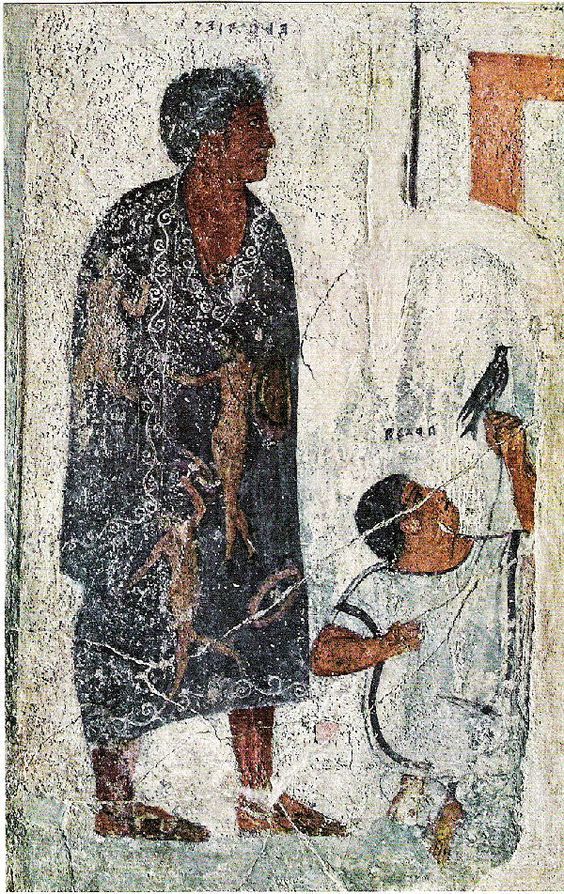


Eurasian steppe continued to be important source of migration and trade between Europe and Asia. Scythians, Iranic nomadic people, were important for facilitating the trade between East Asia and Europe through the silk road during the Iron Age. They controlled large parts of Eastern Europe ruling over Slavic people and later assimilating to the various Slavic groups after loosing their political standing. Other Iranic steppe nomads, connected to Scythian culture also populated the Eurasian steppe during and after Scythia. During the Migration Period, which happened around and after the time of Western Rome, even more different groups migrated to Europe through the steppe. Huns arrived from east to the Volga region by mid-4th century, and they likely came from the eastern parts of the steppe from Mongolian area. Their origins are unclear and they were either Mongolic, Turkic or Iranic origin, possibly some mix of them. Primary descriptions of them suggests facial features common in East Asia. They were possibly the nomadic steppe people known as Xiongnu in China, which was significant in East and Central Asia from 3rd century BCE to 2nd century CE until they moved towards west. Between 4th and 6th centuries they dominated Eastern and Central Europe and raided Roman Empire contributing to the fall of Western Rome.
After disintegration of the Hun Empire, the Huns assimilated likely to the Turkic arrivals of the second wave of the Migration Period. Turkic people originate likely in southern Siberia and in later Migration period they controlled much of the Eurasian steppe and migrated to Eastern Europe too. A Turkic Avar Khagenate (nation led by a khan) controlled much of Eastern Europe from 6th to 8th century until they were assimilated to the conquering Franks and Bulgars (another Turkic people). The Bulgars established the Bulgarian Empire, which lasted from 7th to 11th in the Balkans. The Bulgars eventually adopted the language and culture of the local Southern Slavic people. The second wave of Migration Period also saw the Moor conquest of Iberia and Sicily. Moors were not a single ethnic group but Arab and various Amazigh Muslims. Their presence in the Iberian peninsula lasted from 8th to 15th century and they controlled Sicily from 9th to 11th century until the Norman conquest. During the Norman rule though, the various religious and ethnic groups (which also included Greeks and Italic people) continued to live in relative harmony and the North-African Muslim presence continued till 13th century. Let's be clear that the Northern Europe was also not white. Vikings also got their hands into the second wave migration action and traveled widely to east and west. Viking crews were not exclusively Scandinavians, but recruited along their travels various other people, as DNA evidence proves. They also traded with Byzantium (when they weren't raiding it) and Turkic people, intermarried and bought slaves, some of which were not white or European. A Muslim traveler even wrote one of the most important accounts of Vikings when encountering them in Volga.
By this point it should already be clear that Medieval Europe was neither white, but there's more. Romani people, who originate from India and speak Indo-Aryan language, arrived around 12th century to Balkans. They continued to migrate through Europe, by 14th century they were in Italy, by 15th century in Germany and by 16h century in Britain and Sweden. Another wave of Romani migration from Persia through North-Africa, arrived in Europe around 15th century. Then there's the Mongol Empire. In 13th century they ruled very briefly a massive portion of the whole Eurasian continent, including the Eastern Europe. After reaching it's largest extent, it quickly disintegrated. The Eurasian Steppe became the Golden Horde, but lost most of the Eastern-Europe, except Pontic-Caspian Steppe. They ruled over Slavs, Circissians, Turkic groups and Finno-Ugric groups till early 15th century. The Mongolian rulers assimilated to the Turkic people, who had been the previous rulers in most of the steppe. These Turkic people of the Golden Horde came to be known as Tatars. Golden Horde eventually split into several Tatar khagenates in 15th century, when the khagenates, except the Crimean Khagenate, were conquered by the Tsardom of Moscovy. Crimean Khagenate was annexed by the Russian Empire in 1783. Crusades were a movement from Europe to Levant, but they also meant intermarriage in the the Crusader kingdoms especially between the European and Levant Christians, and some movement back and froth between these kingdoms and Europe, trade and a lot of movement back after the Crusader kingdoms were defeated in 13th century. Generally too trade across the Mediterranean sea was extensive and led to migration and intermarriage.
And here's some example of people of colour in Medieval European art, shown as part of the majority white European societies. First is from a 15th century French manuscript depicting Burgundy court with dark skin courtier and lady in waiting. Second one is from a Flemish manuscript from 15th century of courtiers, including a black courtier, going for a hunt. Third is a 15th century Venetian gondolier with dark skin.

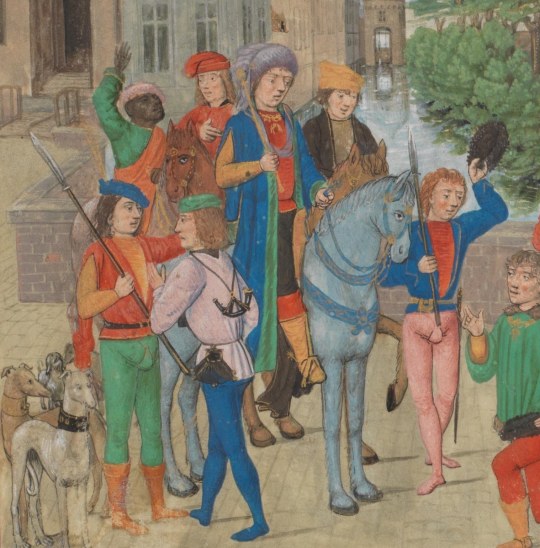

In Renaissance Era Europe was only increasing it's trade and therefore had even more connections outside Europe. The first picture below is Lisbon, which had strong trade relationship with Africa, depicted in late 16th century. People with darker skin tones were part all classes. Second image is an Italian portrait of probably a seamstress from 16th century. Third one is a portrait of one of the personal guards of the Holy Roman Emperor. Fourth image is a portrait of Alessandro de' Medici, duke of Florence, who was noted for his brown complexion, and the modern scholarly theory is that his mother was a (likely brown) Italian peasant woman.
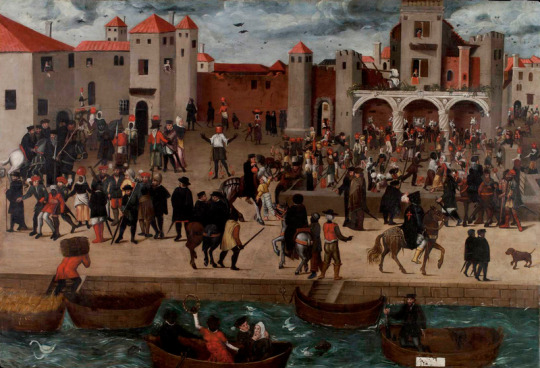

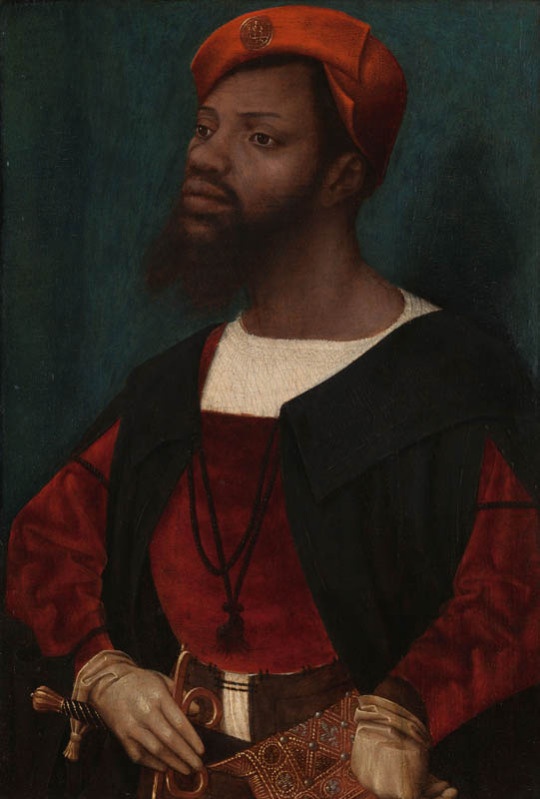

Colonialism begun in the Renaissance Era, but the wide spread colonial extraction and slavery really got going in the 17th century. Racial hierarchy was developed initially to justify the trans-Atlantic slave trade specifically. That's why the early racial essentialism was mostly focused on establishing differences between white Europeans and black Africans. Whiteness was the default, many theories believed humans were originally white and non-whites "degenerated" either through their lives (some believed dark skin was basically a tan or a desease and that everyone was born white) or through history. Originally white people included West-Asians, some Central-Asians, some North-Africans and even sometimes Indigenous Americans in addition to Europeans. The category of white inevitably shrank as more justifications for atrocities of the ever expanding colonial exploitation were required. The colonial exploitation facilitated development of capitalism and the industrial revolution, which led to extreme class inequality and worsening poverty in the European colonial powers. This eventually became an issue for the beneficiaries of colonialism as worker movements and socialism were suddenly very appealing to the working class.
So what did the ruling classes do? Shrink whiteness and give white working classes and middle classes justifications to oppress others. Jews and Roma people had long been common scapegoats and targets of oppression. Their oppression was updated to the modern era and racial categories were built for that purpose. The colonial powers had practiced in their own neighborhoods before starting their colonial projects in earnest and many of those European proto-colonies were developed to the modern colonial model and justified the same way. In 19th century, when racial pseudoscience was reaching it's peak, Slavs, others in Balkan, the Irish (more broadly Celts), Sámi (who had lost their white card very early), Finns, Southern Italians, the Spanish, the Southern French and Greeks all were considered at least not fully white. The Southern Europeans and many Slavs were not even colonized (at least in the modern sense, though with some cases like Greeks it's more complicated than that), but they looked too much and were culturally too similar to other non-white Mediterraneans, and they were generally quite poor. In many of these cases, like Italians, the French and Slavs, it was primarily others belonging in the same group, who were making them into second class citizens. All this is to highlight how very malleable the concept of race is and that it's not at all easy to define the race of historical people.
However, even if we would go with the racial categories of today, Europe was still far from being all white in this period. You had Roma, who certainly are not included in whiteness today, and European Jews, whose whiteness is very conditional, descendants of Moors in Southern Europe and Tatars and Turks in Eastern Europe and Turkey, which today is often not thought of as part of Europe, but historically certainly was. And then colonialism brought even more people into Europe forcibly, in search of work because their home was destroyed or for diplomatic and business reasons. There were then even more people of colour, but they were more segregated from the white society. Black slaves and servants are very much represented in European art from 17th century onward, but these were not the only roles non-white people in Europe were in, which I will use these examples to show. First is a Flemish portrait of Congo's Emissary, Dom Miguel de Castro, 1643. Second is a 1650 portrait of a Moorish Spanish man Juan de Pareja, who was enslaved by the artist as artisanal assistant, but was freed and became a successful artist himself. Third is a 1768 portrait of Ignatius Sancho, a British-African writer and abolitionist, who had escaped slavery as a 20-year-old. Fourth painting is from 1778 of Dido Elizabeth Belle, a British gentlewoman born to a slave mother who was recognized as a legitimate daughter by her father, and her cousin. The fifth portrait is of an unknown woman by (probably) a Swiss painter from late 18th century. Sixth is a 1760s Italian portrait of a young black man.

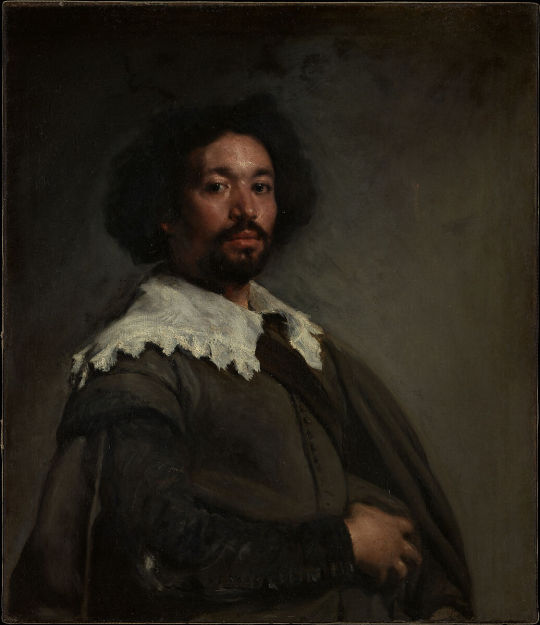
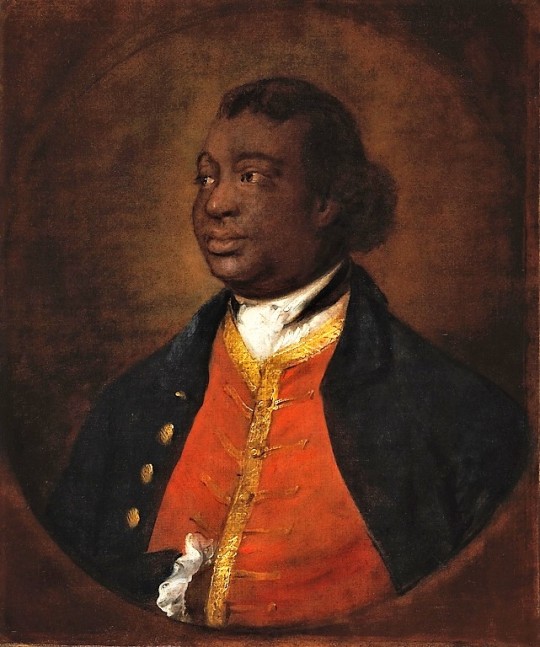
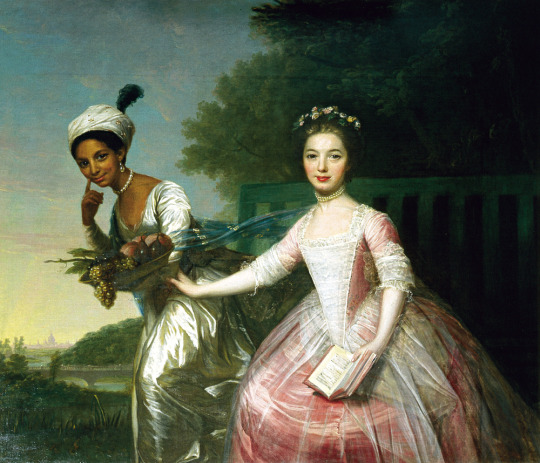
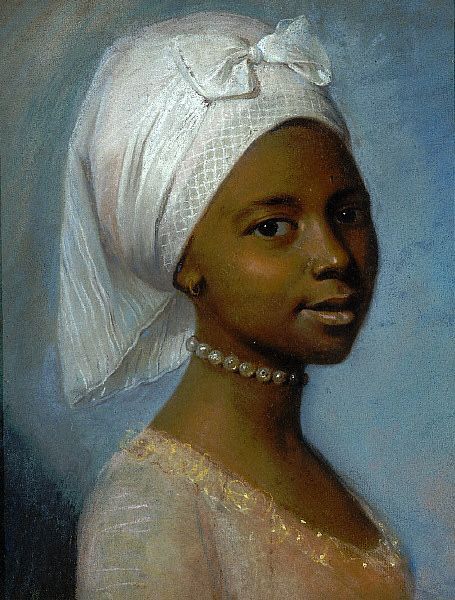
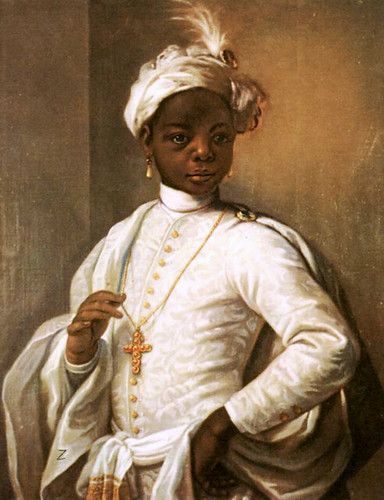
In late 18th century England abolished slavery in British Isles first, then in early 19th century in the whole British Empire, thanks to the continuous campaign of free Black people and some white allies, notably Quakers. Around the same time slavery was abolished in France (briefly till Napoleon got to power) after the French revolution. This meant there were a lot more free black people in Europe after that. In 18th century the Europeans, British especially, were colonizing Asia as much they could, which meant that in 19th century there started to also be a lot more Asian, especially Indian people in Europe. First picture below is of Thomas Alexander Dumas, who was son of a black slave woman and a white noble French man and became a general in the French revolutionary army. His son was one of the most well-known French authors, Alexander Dumas, who wrote The Count of Monte Cristo and The Three Musketeers. Second portrait is of Jean-Baptiste Belley, a Senegalese former slave, who became French revolutionary politician. Third portrait is from 1810 of Dean Mahomed, an Indian-British entrepreneur, who established the first Indian restaurant in London. Forth is Arab-Javanese Romantic painter Saleh Syarif Bustaman, who spend years in Europe. Fifth is a 1862 photo of Sara Forbes Bonnetta, originally named Aina, princess of Edbago clan of Yoruba, who was captured into slavery as a child, but later freed and made Queen Victoria's ward and goddaughter. She married a Nigerian businessman, naval officer and statesman, James Pinson Labulo Davies (sixth picture).
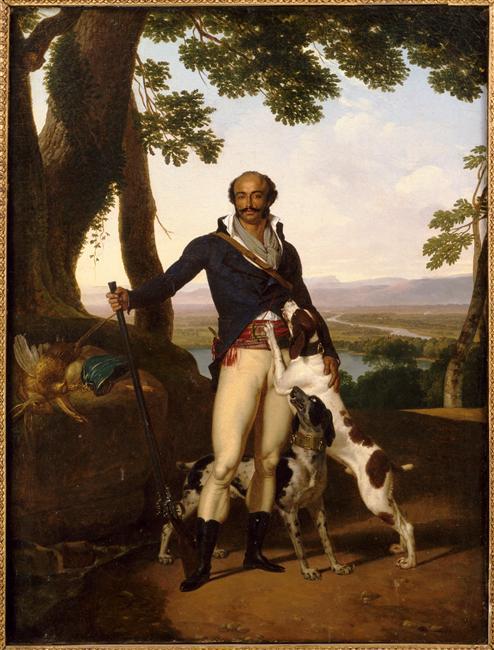


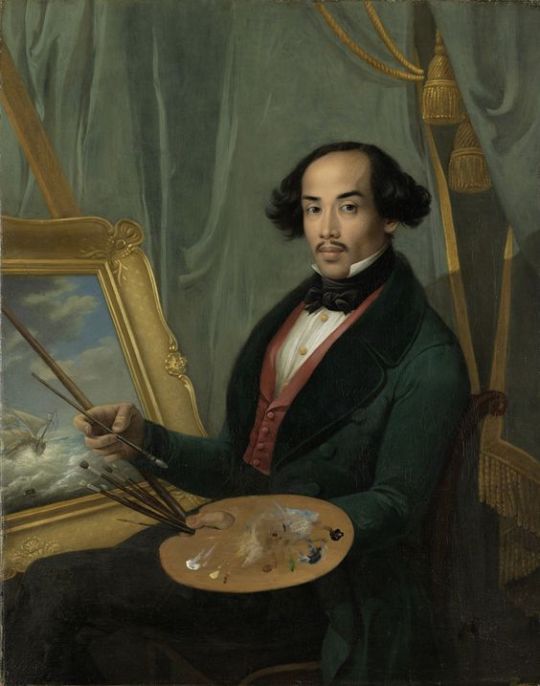
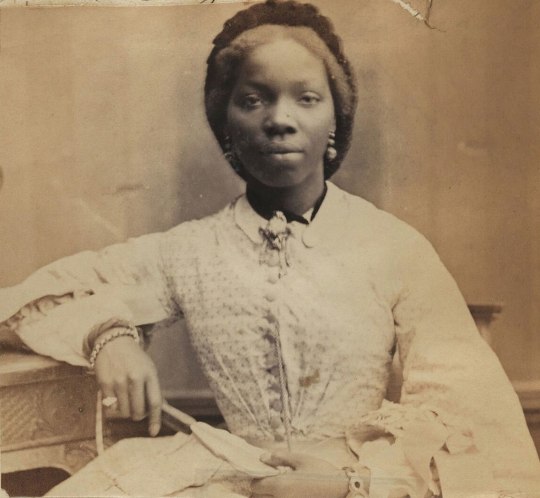
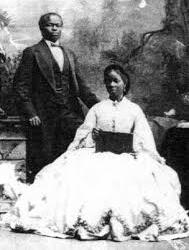
So any guesses on at what point was that "very white Europe" when the "west culture" begun? It kinda seems to me that it never actually existed.
#history#poc history#black history#historical art#european history#history of race#colonialism#racism#slavery#painting#photograph
192 notes
·
View notes
Text
Europe without trade, a worldbuilding exercise
This exercise pissed off a bunch of white people for all the wrong reasons, but facts are facts and I can link you to all the major resources. You all should be insulted at the idea that Europe can't trade, that melanin dictates that white people can't get along and find ways to trade. But that's not why they were upset. They were upset at the idea that a single region couldn't provide for people. And that's the wrong thing to get upset about. And I'm telling you that's white supremacy ideology you need to boot. Europe, too, traded and used people from other regions who migrated and were physically there on foot. Stop thinking that your lack of melanin is a force field.
So the exercise goes like this: Shortly after Homo Sapiens interbred with the Neanderthal and migrated to Europe, there was a magical force field put around Europe to cut off Europe from the Middle East, Africa, etc. ^^;; I'm sure people from the Caucuses aren't very pleased with this since they get commandeered into this exercise which racists somehow love. Later people also deemed them inferior (which takes a while to travel through but there is a wikipedia page dedicated to the term Caucasian meaning white [link] that goes over this ranking thing and the racist origins and ties to Nazis). But whatever, Nanowrimo a*holes were determined to argue against trade, fine, let's play this game and cut the whole of the Middle East/West Asia.
The other rule is that the Gulf Stream still exists, so you can have that unusual European climate which is a fluke. (This also ticked off people? But seriously, to get the gradient of Europe that far north, you need to Gulf of Mexico otherwise the latitude range would look more like the US than Europe, more south, and larger, much larger. And most people don't make a continent that large. Why people get ticked off at true facts is a whole thing.)
If you cut off the Gulf of Mexico, which a lot of world building of European-like continents do, you get Siberia. So the Gulf of Mexico has to stay for our Hypothetical Europe. (Not getting into continentality either.)
We're not counting the little bit of Turkey here, BTW. Turkey gets to stay whole. And Russia gets kicked out because it always gets kicked out anyway and besides, people were preaching about stupid things when these racists were posting, like all of Russia is white. And then people were arguing over if Russia counts. Fine. We'll kick Russia out. BTW, Australia was called all white. Haha. Aboriginals don't exist according to them. Like WTF. But whatever.
The question is what civilization can Europe grow with only the resources found naturally in Europe? Can you build a European civilization with only things found naturally occurring in Europe?
The first issue is STAPLE CROP.
Yeah, if you notice, you've cut off all of the major grains to Europe. You've also cut off the Beaker people. Oops.
Some Anthropology here, Beaker people brought agriculture to Europe. They were also from Turkey.
https://www.nhm.ac.uk/discover/news/2018/february/the-beaker-people-a-new-population-for-ancient-britain.html
So, Stone Henge, Long burrows, and all of that are suddenly cut off.
Honestly, this one is terrible to overcome. Most of the BBC docs I watched argued that the ancient people of Britain before Brown people from Turkey brought agriculture and the Cheddar Man, were boiling and eating reeds. Think like cattails type of thing, which is really hard to eat.
Upside, you still have fire in the form of rush lights, though you can't use tallow or beeswax--comes from outside of Europe. And horses are too lean. So, likely the European bison? However, this limits technology quite a bit as advancements can't be made by night and only by camp fire. (Fire is safely pre-modern humans—homonins and some say Homo Erectus, though still debated. But at least Homo Hedelberengensis)
Without a staple crop, you're going to have it tough to make enough surplus to build anything. You need free time and enough food supply to build things like castles.
The closest you might get is maybe peas? The best you get is pea flour, and have you worked with pea flour? It doesn't do anything like the wheat family does.
Nutritionally, it's also low carbs, which is great if you're on a low carb diet, but not great for a civilization.
Pea flour:
100 kcal, 18 g carbohydrate, 8 g fiber, 0 g fat, and 8 g protein
White rice:
Total Fat 0.4 g
Saturated fat 0.1 g
Cholesterol 0 mg
Sodium 2 mg
Potassium 55 mg
Total Carbohydrate 45 g 15%
Dietary fiber 0.6 g
Sugar 0.1 g
Protein 4.3 g
https://www.healthline.com/health/food-nutrition/brown-rice-vs-white-rice
68-82 amounts of energy in rice.
So peas aren't a bad choice, but the problem is that you don't have a binder. You need a binder to make bread, etc. Even this one here: https://www.powerhungry.com/2024/02/06/split-pea-bread-vegan-oil-free-gf/
Uses a binder from India. But the majority of your people aren't eating Bread. The recipes I can find include non-European things like rice or things outside of Europe. This severely hinders your tech advancements. Being able to eat on the job and not have it take forever is really hard. The portability of bread is a plus for technology. And peas can get mushy and if cooked can mold.
There are Lactofermented peas:
https://www.beetsandbones.com/lacto-fermented-green-peas/
But they aren't widely eaten and include things like garlic, which is out. Bay leaves are not from Europe. Garlic is a difficult one since garlic kills so many bacteria, but you can cope with oregano, I suppose, which kills a high amount of bacteria according to a well vetted study since it was published (original study was 1999, but followup studies since then):
Preservation is a huge part of production and an upside of grains.
Also, how are you going to produce alcohol? This makes water safer to drink. You'd have to convert to teas. (Raspberry leaf tea is a thing.) Peas are not high starch enough, as cited to hold together bread. It's not good enough to make alcohol.
But now you're thinking, OK, we got peas as a staple, they just won't make bread out of it.
Peas, a major protein source, you don't need cows, pigs, etc as much. (Though you're still kinda lacking in vitamin B12, but I'll cover that later.) And your people make a new type of pea plant (BTW, legumes is the largest plant family on Earth.)
Might limit you to not be able to carry it around easily and it's hard to rehydrate, but eventually your people get there.
(If you're thinking, but lentils, yeah, not Europe. Deal).
Subsequent agriculture
Tanning leather, BTW, you need oak trees with high tannins, but this tech originated from Western Asia (or Southwestern Asia, if you want to call it that)
Oak trees are found on five continents, but it's a bit fuzzy on how they got there. Humans have a habit of picking up seeds and spreading them about. My own great grandfather loved collecting seeds and planting them. You also have Johnny Appleseed.
The processing time to make acorn flour is pretty terrible (You have to boil it a long, long time to remove the tannins, this is why I didn't suggest this as a staple), but at least you have leather.
The major other crops are out:
Potatoes, sweet potatoes, tomatoes, chocolate, hazelnuts, walnuts, corn, wheat, rye, barley, strawberries? (This one is questionable.), pears (China), apples (Central Asia), Pomegranates (Iran), and major fruits you can think of. Think of a major fruit. Look it up and you'll find it doesn't come from Europe, though it might be grown there.
Most of the spices and herbs are out (sage, oregano, rosemary, and thyme stay in.) No, you can't have garlic. Most allium comes from outside of Europe.
Animals are also out: pigs, goats, sheep, cows, chickens, llamas, alpacas.
It's debatable about horses. One thread people debated back and forth on horses, so I'll lay that out.
This leaves you likely with dogs, which probably came with early modern humans. Yeah, ummm... there's a question here, and maybe I shouldn't touch it, and the answer is likely no, probably not eating them. Not unless people get desperate. The Cambridge History of Food also questions the archaeology from Western Asia, but the archaeology also says the only time humans ate dogs were in desperation and the layer in question came at the heels of a drought? (I took a picture of the page, pretty easy to look up since it has an excellent index.).
This leaves deer. Not a good animal to domesticate, but let's say Reindeer. (Thinking Evenk here).
I'm adding in carob.
So Round up of what we have?
Staple crop: Legume, likely related to peas.
Secondary crops:
You have brassica (mustard family)
Olives
Rosemary
Thyme
Oregano
sage
horseradish, maybe.
Acorns—makes leather
carob
currants
gooseberries
raspberry
blackberry
turnip, possibly beets
parsnip
Stinging nettle
Dandelion (European and edible from roots which make a substance said to be similar to coffee to the buds.)
Brassica family, mainly Brussel sprouts, but possibly they would invent others.
BTW, carrots originally weren't orange until William of Orange, who gets his name from a plant native to Southern China-ish.
But other berries—cranberry, is from the Americas. And strawberry, while found in Europe, was originally domesticated in the Americas. This one is a question mark. Because it was found on both continents, but was only domesticated in the Americas.
The majority of the foods you find are domesticated in West Asia, Southern China and the Americas (mostly central Americas and Northern South America.) Welcome to the downside of temperate climates.
Pies? Nope. "What about Shepards Pie" Yeah, where are you getting the potatoes? Also the iron works is in question here. (later)
Short list. You're losing your mind, no pizza? Yep. No pizza. (lol Someone got mad when I pointed this out with links). Tomato is New World, Wheat is West Asia, Cows domestication is West Asia and Northern Africa. Horse milk you can't form into cheese without camel rennet. Camels, you guessed it, not Europe.
Possibly new legumes to maximize it. (They grow tall as trees, make peanuts, etc, so it's possible a culture under pressure would make new ones. BTW, peanuts is new world.)
Domesticated animals: Dogs, deer, maybe horses—horses are debated. European rabbits, yes, though don't make for good domestication since they are really difficult to work with which you'll have to look up. Look up a rabbit care video. But at least breed fast. Low amount of fat for candles, though.
You'd also have seafood. Only one type of seaweed is poisonous in the world and that is in England. But it's highly nutritious. (The native seaweed in India is apparently nasty, but edible).
You don't need as much with the pea family anyway.
European Bison are not easily domesticated, BTW, but would give you tallow-ish stuff if they succeeded or an ethnic group decided to be nomadic pastoralists with them.
For sweet taste, carob. Easy to process, and you don't need sugar beets, which is harder to process and were only invented as a source in the late 19th century. Mediterranean.
The seeds are edible so just grind it up. Though it's easier to grind the pods. So it's easier to process and use in other recipes.
The other options are out: Honeybee domestication originated in China, there's a form in Northern Africa, but the frame design was late 1800's, so Victorian. Even if you had it, it would be for rich people.
Sugar cane is tropical.
Carob mildly tastes like chocolate. This is your chocolate substitute. No fermentation required. However, it doesn't have the properties of chocolate melting, etc. The fat content is much lower, but the production is much higher.
Dates, BTW, are from 4000 BCE in West Asia, fertile crescent. It's out. https://foodandnutrition.org/from-the-magazine/dates-an-ancient-fruit-rediscovered/
The problem with horses
This part is really difficult to climb through.
The first part is that horses were likely domesticated outside of Europe. Also, the invention of the saddle, etc was also outside of Europe. You need a good staple crop to have enough time to mes around with it. You would also have a smaller population if it stays in Europe.
This part got heated in the original. So the evidence is this:
Horses were domesticated outside of Europe (It's on the border of Europe, so hotly debated)
Horses were killed off in the Americas by Indigneous people before being reintroduced. https://new.nsf.gov/science-matters/horses-part-indigenous-cultures-longer-western
The technology to domesticate the horse further was outside of Europe (saddle, stirrups, etc)
But horses exist in Europe, wouldn't they want to breed them?
But maybe only for food? (recent scandal at the time)
Would they be burden animals? You need burden animals fro agriculture to advance and higher production.
So yeah... without cows, pigs, goats, sheep, large questions arise about this.
Would the population split into eating and noneating? Would it not?
Yeah, limited foodstuff. Limited calories, but your people are making it, but maybe not turning white yet? Well, in Southern Europe. Introduction of grains and farming was said to be the thing that tipped people over.
Agriculture is really difficult to achieve without a staple crop like grains or starchy tubers.
But for the sake of argument, let's say they get there, and manage to never break the force field, no matter what, because racists win or whatever. No food importation in or out, no new ideas.
What now?
Arches, as an idea, came from outside of Europe. Rafts do predate humans (Homo Erectus again), but boats, was likely Phonecian. And metal working and stone working also came from outside of Europe as ideas. Beaker people, love them.
Metal working came from Northern Africa, BTW, but say they figure it out, and we let them slide.
You get stunted in Maths since ideas of math came from Babylonians. Later Migrations of Minoans don't count anymore. Linear A isn't invented, but OK, OK, there was written language invented in the Americas, so it's possible, if they get through agriculture and get up to what? Trade, they might have language. But wait, you (Nanowrimo person) just said trade is evil, so maybe they don't have a written language? In all instances of language being created it was on the back of what? trade. Maths awas also created on the back of mostly trade. Sumerians created their written language on trade. The oldest tablets we have is a trade dispute.
Look up Complaint tablet to Ea-nasir. In another words, written records were for keeping track of ledgers, one of the oldest types of writing on record.
These people think trade is too complicated and evil to exist in Europe. So OK, no written language for you, though seriously, I don't know how that works. Is Northern Europe a different subsistence system than Southern Europe?
You all are fighting for diminishing resources (considering 1500's Europe and a BBC doc about how trees were fought over and laws about not cutting down trees) each other while the rest of the world is trading back and forth on ideas and not getting imperialized. Fine. Let's play that game.
The amount of technology gets cut down severely when you disconnect Europe from the rest of the world. You don't get the iron age without some knowledge about smelting. And you need those "dirty Africans" or whatever racist thing they were thinking in order to get that smelting. You don't get masonry without PoCs (Most masonry, as an idea came from West Asia, and they would literally import those people to work on castles, see the docs on Guédelon Castle from British TV). Whatcha going to do?
Let's move onto clothes...
Flax (for Linen), silk, ramie, hemp (for clothes which is a different cultivar), coir, Abaca, Angora (rabbit)*, Angora (goat), wool (obviously), bamboo, banana fiber, cashmere (the goat), sisal, camel hair (obviously), kapok, mohair, kenaf, yak, Qiviut, vicuña,Hibiscus cannabinus, Lyocell, Modal (AKA Rayon) *, Piña (pineapple), and Soy protein are out. All of them occur outside of Europe or require an industrial society.
Byssus AKA sea silk, Chiengora (dog hair), spider silk*, is in.
However, notice how expensive and difficult it is to make clothes of these things. So only rich can access them.
dog* hair often requires wool to be added to make the hairs stick together. And sheep wool, in particular has really good spinnable fibers.
Spider silk also kinda takes higher technology to produce into clothing. Look it up and some might find it cruel to do it that way.
Byssus also known as Sea silk was produced by the Greeks and Romans, but only for the super rich.
This means for poor people: Leather and stinging nettle fabric is what they have left. You can see a video of that here:
https://www.youtube.com/watch?v=t-usU7-WjUU
So your people have clothing. They aren't white except for the nomadic people to the north unless you can advance their agriculture and slide the pea family to replace the major nutrition somehow.
And making clothes is torture for the common populace who have to pick stinging nettles for their clothes.
You're thinking, but Angora Rabbits? Yeah, this is possible, though not likely called that since the rabbits originated from Turkey, which is outside of the scenario, but it would be maybe possible your people come up with something similar given human nature as long as they pause the rabbit breeding long enough and have enough surplus to tinker.
So poor people are running around with stinging nettle fabric, rich are wearing most likely sea silk, and you can see the misery compared to growing something like flax.
I doubt anyone can afford to be vegetarian with limited resources. Pescitarian, maybe closer to the shore.
*Dogs were domesticated outside of Europe, but are often attributed to why humans outpaced Neanderthal and date back far enough in time that early humans likely took them to Europe when they first arrived. Cats, however, were domesticated in Africa and are OUT. (Making the majority of writers cry since there seems to be more cat people than dog people among writers).
Conclusion
You're stuck with the Humours, but does Greek civilization even exist without grains? So much collapses when you don't have the subsistence infrastructure. I mean there is a reason people made bread and carry grains and we don't eat peas as a staple.
So you'd have to build everything from scratch starting around ~45,000 BCE or earlier (when Homo sapiens came to Europe by estimates) and you don't even have those really white people then according to science except the Evenk ancestors who show white about 10K years ago? (No, it's not the Caucuses—in what right mind do you think white people developed in the Caucuses when you know about Vitamin D and darker melanin generally around the equator due to skin cancer, etc issues and so on.)
Umm, the lesson here is that Europe was never cut off and people should stop going into that fantasy. Like how did you get apples, plums, honey, etc without trade? And also, people shouldn't be afraid of trade and keep in mind temperate climates (Middle/Northernish Europe) aren't the only biomes in Europe. No matter how much fantasy wants to focus on Western Europe and ignore the Scandis. Seriously, I'm so bored of people assuming everything is like Germany or a less rainy England in fantasy. (And I do mean England, not Scotland or Wales). Can't we get some variety? You have the Mediterranean, but you also have Scandinavia, and you're doing Europe? Where are they? You also had foragers and Nomads in the history of Europe. The Romani from North Western India, for example. And some say that early Celtic groups could have been partial foragers before the coming of Beaker people.
But even in an alt sci-fi, you have to trim all of those accomplishments of PoC and then argue that your people killed all of the PoCs on the way to the planet, and really, that makes no sense. But I suppose then you can murder Bibimbap into tatertot disgusting mess later on. But really?
But even say, you had an organically grown planet that happened to grow a humanoid species, how are you going to grow it without some level of cooperation? And the majority of the food stuff is going to come from those warmer climates: Southern China, West Asia and Central-ish Americas. They don't have a winter to worry about. So it would be imperative for your people to trade.
While you're at it, I'm really squicked by the idea that people put in 16 year old girls to marry much older guys in fantasy and then call it acceptable. You can change at least those rules.
I don't get why people work so hard to cut out LGBTQIA, disability and PoCs from fantasy? Like people should have maimed legs from all the battles written.
BTW, I am amused by the idea that in Star Trek times they didn't have birth control. lol thousands of years and haven't perfected birth control? That one I can't believe. Picard didn't know how to use a condom. lol.
63 notes
·
View notes
Text
For years, scientists have debated whether humans or the climate have caused the population of large mammals to decline dramatically over the past several thousand years. A new study from Aarhus University confirms that climate cannot be the explanation.
About 100,000 years ago, the first modern humans migrated out of Africa in large numbers. They were eminent at adapting to new habitats, and they settled in virtually every kind of landscape—from deserts to jungles to the icy taiga in the far north.
Part of the success was human's ability to hunt large animals. With clever hunting techniques and specially built weapons, they perfected the art of killing even the most dangerous mammals.
Continue Reading.
169 notes
·
View notes
Photo

Polynesian Navigation & Settlement of the Pacific
Polynesian navigation of the Pacific Ocean and its settlement began thousands of years ago. The inhabitants of the Pacific islands had been voyaging across vast expanses of ocean water sailing in double canoes or outriggers using nothing more than their knowledge of the stars and observations of sea and wind patterns to guide them.
The Pacific Ocean is one-third of the earth's surface and its remote islands were the last to be reached by humans. These islands are scattered across an ocean that covers 165.25 million square kilometres (63.8 million square miles). The ancestors of the Polynesians, the Lapita people, set out from Taiwan and settled Remote Oceania between 1100-900 BCE, although there is evidence of Lapita settlements in the Bismarck Archipelago as early as 2000 BCE. The Lapita and their ancestors were skilled seafarers who memorised navigational instructions and passed their knowledge down through folklore, cultural heroes, and simple oral stories.
The Polynesian's highly developed navigation system impressed the first European explorers of the Pacific and since then scholars have been debating several questions:
was the migration and settlement of the Pacific islands and into Remote Oceania accidental or intentional?
what were the specific maritime and navigational skills of these ancient seafarers?
why has a large body of indigenous navigational knowledge been lost and what can be done to preserve what remains?
what type of sailing vessels and sails were used to cross an open ocean?
Ancient Voyaging & Settlement of the Pacific
By at least 10,000 years ago, humans had migrated to most of the habitable lands that could be reached on foot. What remained was the last frontier – the myriad islands of the Pacific Ocean that required boat technology and navigational methods be developed that were capable of long-range ocean voyaging. Near Oceania, which consists of mainland New Guinea and its surrounding islands, the Bismarck Archipelago, the Admiralty Islands, and the Solomon Islands was settled in an out-of-Africa migration c. 50,000 years ago during the Pleistocene period. These first settlers of the Pacific are the ancestors of Melanesians and Australian Aboriginals. The small distances between the islands in Near Oceania meant that people could island-hop using rudimentary ocean-going craft.
The so-called second wave of migration into Remote Oceania has been an intensely debated scholarly topic. Remote Oceania is the islands to the east of the Solomon Islands group such as Vanuatu, Fiji, Tonga, Aotearoa (New Zealand), Society Islands, Easter Island, and the Marquesas. What is debated is the origins of the first people who settled in this region between 1500-1300 BCE, although there is general agreement that the ancestral homeland was Taiwan. A dissenting view has been that of Norwegian adventurer Thor Heyerdahl (1914-2002 CE) who set out in 1947 CE on a balsa raft called Kon-Tiki that he hoped would prove a South American origin for Pacific islanders. Archaeological and DNA evidence, however, points strongly to a southeast Asian origin and seafarers who spoke a related group of languages known as Austronesian who reached Fiji in 1300 BCE and Samoa c. 1100 BCE. All modern Polynesian languages belong to the Austronesian language family.
Collectively, these people are called the Lapita and were the ancestors of the Polynesians, including Maori, although archaeologists use the term Lapita Cultural Complex because the Lapita were not a homogenous group. They were, however, skilled seafarers who introduced outriggers and double canoes, which made longer voyages across the Pacific possible, and their distinctive pottery – Lapita ware – appeared in the Bismarck Archipelago as early as 2000 BCE. Lapita pottery included bowls and dishes with complex geometric patterns impressed into clay by small toothed stamps.
Between c. 1100-900 BCE, there was a rapid expansion of Lapita culture in a south-east direction across the Pacific, and this raises the question of intentional migration.
Continue reading...
31 notes
·
View notes
Text

This is an area of active debate, and also evolution of language is not my field, so I'm not especially qualified to speak on it. The position that language evolved separately in different areas of the world (polygenesis of language) is held by various people, so indeed it "may have" occurred that way. By in my estimation it's not particularly likely.
Humans have a lot of specialized adaptations for speaking. Our vocal tracts allow us to produce a wide range of consonant sounds, for which we are unique among mammals. The range of our hearing also appears tuned to pick up these consonant sounds. We also very probably have cognitive adaptations specifically for speech production (as opposed to just general intelligence), although their nature is perhaps less agreed upon. All in all we are biologically adapted for speech, and there is some evidence that earlier human subspecies like Neanderthals were too.
In light of this, I think it is almost certain that language predates human anatomical modernity, perhaps by a very great degree (recall also that things like relatively complex tool making predate modern humans by several million years). Thus: language predates the migration out of Africa, it predates various population bottlenecks that modern humans were subjected to, etc. etc. Most importantly, I think it is extraordinarily unlikely that language is something we "invented" one day. I strongly suspect the modern human linguistic capacity evolved slowly out of earlier, simpler communication systems used by our primate ancestors—communication systems which had some cultural variation, as modern chimpanzees show today, but orders of magnitude less than what humans have. And, in the limit, these systems evolved from even simpler ones with no cultural variation at all.
This makes monogenesis trivially true if go far back enough. Under this hypothesis we can say that modern human linguistic variation might conceivably date to pre-human cultural variation in our ancestors' simpler, pre-linguistic communication systems. If this is the case, human-language-as-such still would have been subject to either strong mutual areal influence at various points in history or to some kind of convergence of features due to the constraints of modern human linguistic cognition specifically, because all modern languages are "pretty similar".
This is all not to mention creolization, which depending on how you want to frame it, adds disjoint nodes or cycles to the tree of linguistic descent.
134 notes
·
View notes
Note
there was Chinese interest in the Out Of Asia theory, in both the Republic, Chiang Republic and People’s Republic periods before the Out Of Africa theory became commonly accepted. Was the 1954 Yeti expedition done just from the Nepalese-Indian side or were the American agents and “anthropologists” given access on the Sino-Tibetan side of the Himalayan border?
During the early part of this century, it was absolutely believed for a long time that the deserts of Western China were the most likely place of human origins, as seen in this migration map from 1944, made from the best available knowledge of the time:
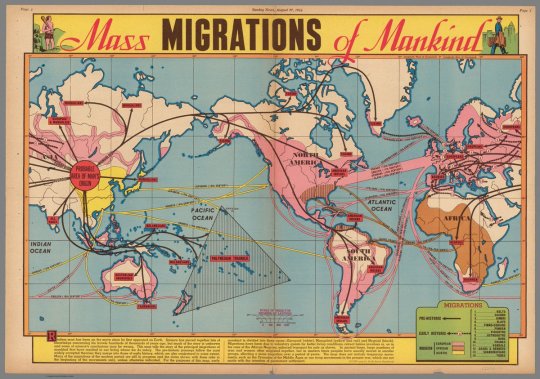
Remember, the oldest fossil remains at this point were in China, where Homo erectus was discovered (originally known by his initial place of discovery in Chungkotien Cave, nicknamed "Peking Man"). The discovery of Australopithecus and Homo habilis in Olduvai Gorge and South Africa, which place human origins in Africa, were not until the 50s and 60s, so it seemed entirely reasonable that Homo sapiens evolved in Western China.
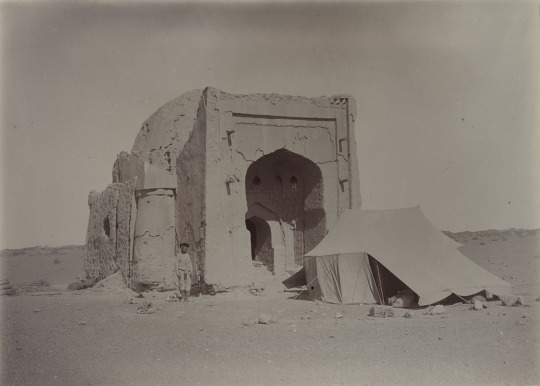
The idea that China's desert regions were the origin of modern humans and culture is seen a lot in pop culture from 1900-1950, mainly because there were tremendous explorations in the region, especially Aurel Stein's expedition of 1908, who ventured into the Taklamakan Desert to find the Dunhuang Caves and Khara-Khoto, a city destroyed completely by Genghis Khan and vanished in the desert.
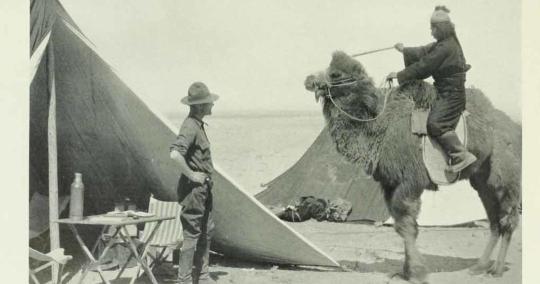
If you've ever heard of Roy Chapman Andrews and his famous expeditions in the 1920s, it's worth noting that he ventured into the Gobi Desert looking for human remains....not dinosaurs, and the discovery of dinosaur eggs was an unexpected surprise.

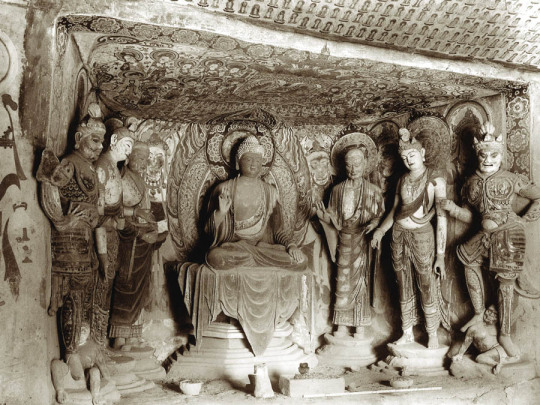
For that reason, there was a short lived Silk Road Mania that seemed to be a smaller scale predecessor to the pop culture dominating Egyptomania of the 1920s. It's bizarre to read adventure and fantasy fiction of the 1910s-1920s that features mentions of Silk Road peoples like the Kyrgyz, Sogdians, Tajik, Uigurians, and Tuvans. The best example I can think of would be the Khlit the Kossack stories of Harold Lamb (who also wrote a biography of Tamerlane), which together with Tarzan and Tros of Samothrace, formed the core inspiration for Robert E. Howard's Conan the Barbarian.
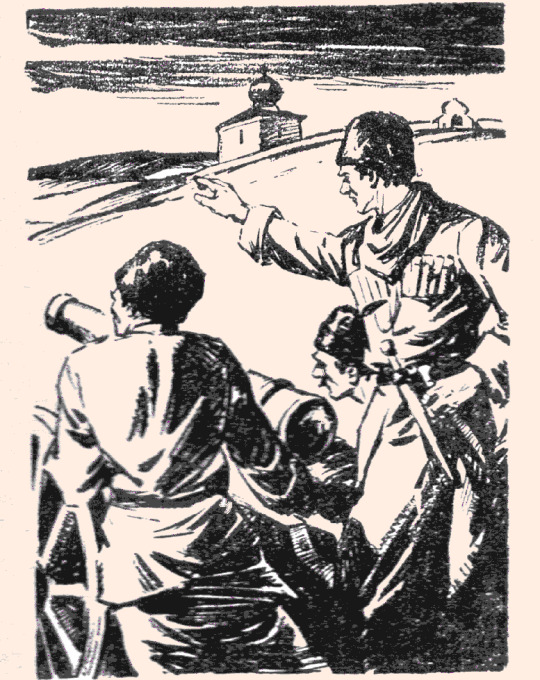
The most interesting example of this would be A. Merritt's Dwellers in the Mirage, which featured a lost city in Xinjiang that was the home of the Nordic race, who worshipped their original religion, the kraken-like squid devil god Khalkru. It was widely believed in this era that Nordics emerged from Central Asia originally, and while it's easy to write this off as turn of the century racialist claptrap pseudohistory (along with Hyperborea legends), in this case, it is actually true: a branch of the Indo-European family lived in West China, and 5,000 year old redheaded mummies have been found in the region. As usual, A. Merritt was right on the money with his archeology, more so than other 1920s authors. After all, his "Moon Pool" was set around the just discovered ruins of Nan Madol, the Venice of Micronesia.

Jack Williamson's still chilling Darker Than You Think in 1948 was also set in the Silk Road/Central Asian region, as the place the race of shapeshifters emerged from, Homo magi, who await the coming of their evil messiah, the Night King, who will give them power over the human race.
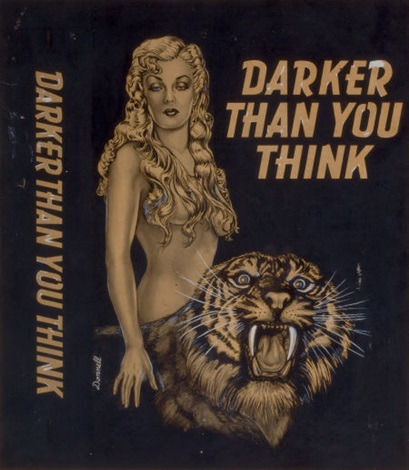
H. Rider Haggard set "Ayesha: the Return of She" (1905) in Xinjiang, among a lost Greek colony in Central Asia (no doubt based on Alexandria on the Indus, a Greek colony in modern Pakistan that was the furthest bastion of Greek Culture). This was also two years after the Younghusband Thibetan Expedition of 1903, where the British invaded Tibet. At the time, the Qing Dynasty was completely declining and lost control of the frontier regions, and the power vacuum was filled by religious authority by default (this is something you also saw in Xinjiang, where for example, the leader of the city was the Imam of Kashgar).
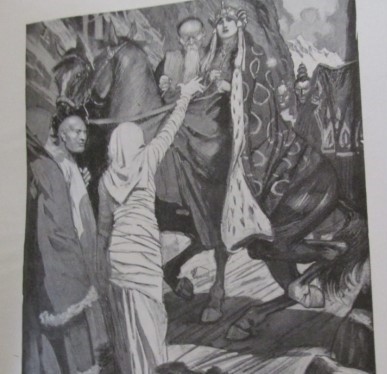
This is one of the many British invasions they have attempted to cram down the memory hole, but if you ever see a Himalayan art piece that was "obtained in 1903-1904" ....well, you know where it came from.
Incidentally, there's one really funny recent conspiracy theory about paleontology, fossils, and China that I find incredibly interesting: the idea that dinosaurs having feathers is a lie and a sinister plot spread by the Communist Chinese (who else?) to make American youth into sissy fancylads, like Jessie "the Body" Ventura. How? By lying to us and making up that the manly and vigorous Tyrannosaurus, a beast with off the charts heterosexuality and a model for boys everywhere, might have been feathered like a debutante's dress. What next - lipstick on a Great White Shark? The long term goal is to make Americans effeminate C. Nelson Reilly types unable to defend against invasion. This is a theory that is getting steam among the kind of people who used to read Soldier of Fortune magazine, and among abusive stepfathers the world over.

...okay, are you done laughing? Yeah, this is obvious crackpottery and transparent sexual pathology, on the level of the John Birch Society in the 60s saying the Beatles were a Communist mind control plot. Mostly because animals just look how they look, and if it turned out that the ferocious Tyrannosaurus had feathers and looked like a fancylad Jessie Ventura to you, well, that's your problem and mental baggage, really.
I was left scratching my head over this one. But there is (kind of) something to this, and that is that a huge chunk of recent dinosaur discoveries have been in China. I don't think it has anything to do with a Communist plot to turn American boys into fancylads, but more to do with a major push in internal public investment in sciences in that country, and an explosion of Chinese dinosaur discoveries. If you want to see a great undervisited dinosaur museum, go to the Zigong Dinosaur Museum in Sichuan.

Pop quiz: what living scientist has named more dinosaur discoveries? It's not Bakker or Horner. The greatest living paleontologist, Xu Xing, which is why a lot of recently found dinosaurs are named things like Shangtungasaurus.
250 notes
·
View notes
Text
Unknown lineage of ice age Europeans discovered in genetic study
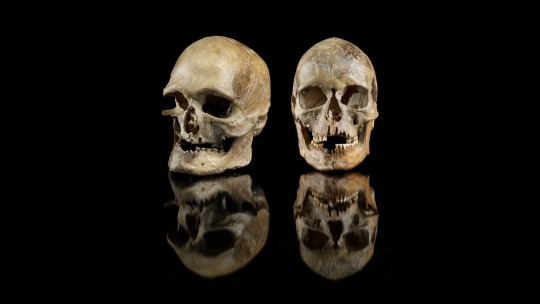
A previously unknown lineage of Europeans survived the coldest parts of the last ice age, only to vanish when Europe went through a warm spell starting about 15,000 years ago.
The discovery comes from the largest study yet to look at the genetic makeup of ice age European hunter-gatherers.
For most of the past 100,000 years, glaciers covered much of Europe. Starting about 45,000 years ago, hunter gatherers began arriving in Europe from Africa through the near East, toughing it out during the Last Glacial Maximum (roughly 25,000 to 19,000 years ago), the coldest part of the last ice age.
Archaeologists know about the first modern humans in Europe from the artifacts they left behind. However, few human fossils remain from those early cultures, so little is known about how these ancient people migrated and were related to one another. Read more.
462 notes
·
View notes
Text
Black woman says this and left white people speechless..must watch
youtube
Too often when I tell people who call themselves white that there are no such things as white people and they became unhinged as if I had hit them with a baseball bat unprovoked.
I'm not one of the Black Indigenous People who believes in whiteness because it isn't real and I don't give my enemies what they like, I give them everything that they hate. This is psychological warfare at its best.
I'm not a Black Indigenous Man who calls myself Black but speaks the white narrative. Every time they mention Black slavery is continually being associated with Black and African and Black Indigenous People globally themselves repeat the same white narrative because they are indoctrinated in believing whiteness.
Black Americans say that they are from Africa due to the transatlantic slave trade, really? How do you know that you didn't come here long before the slave trade even started? How do you know if you didn't come from Mexico, Australia, Oceania, Indonesia or somewhere else where Black Indigenous People globally were transported from to be enslaved in America?
What makes you think that you were not already here because of the Migration out of Africa? We have irrefutable evidence that a small part of our DNA traces back to Africa the same as the entire human population.
People who call themselves European and white receive indigenous status in Africa and obtained land because they were approved and Black Indigenous Africans had to pay for land, how is this right? If you have lived in Africa as I did I couldn't tell where in the fuck I lived because I seen more people who call themselves white living on the African continent than I see in some cesspools we call America and Europe.
If these countries are so great, why in the fuck are you calling Africa home? While living in Ghana I had to go to the villages where Black Indigenous Africans lived to get away from people who call themselves white.
I couldn't stand living in Egypt due to most of the people speaking French and Egypt living under the control of the French. Colonization has fucked up our Black Planet because we can't go anywhere without the threat of whiteness.
I'm so damn sick and tired of whiteness I find it hard to sleep at night, due to the irrefutable truth that this is a cancer that needs eradicating so that we can have peace.
#black love#black positivity#black africans#black history#science#evolution#science side of tumblr#Youtube
71 notes
·
View notes
Text
Let's take a closer look at the hominin skulls in the Senckenberg Museum's human evolution room. Keep in mind this is not a linear progression through our ancestors, and more like a bunch of closer and more distant cousins.


The first one, Sahelanthropus tchadensis is seven million years old, and may very well not be a hominin at all. I've always leaned towards the hypothesis that it's a gorilla relative, not one of ours. No matter which branch of the apes it belongs to, it lived not long after the time the human-line (hominins) and the chimp-line separated, and possibly even before that point!


Ardipithecus ramidus, the first hominin from where we can start making a fairly decent family tree of our relatives. Before this point, 5 million years ago, hominin fossils are very rare, fragmentary, and difficult to assign. One of the most interesting things that does seem to emerge from these early fossils is that we have walked on two legs for a long time. Maybe even so long that our common ancestor with the chimps and bonobos did it!

Lucy represents Australopithecus afarensis, who shows up at this point (3.3 million years ago).


Australopithecus africanus, the Taung child to be precise. We're about 2.8 million years ago at this point. Australopithecines must've been such fascinating creatures.
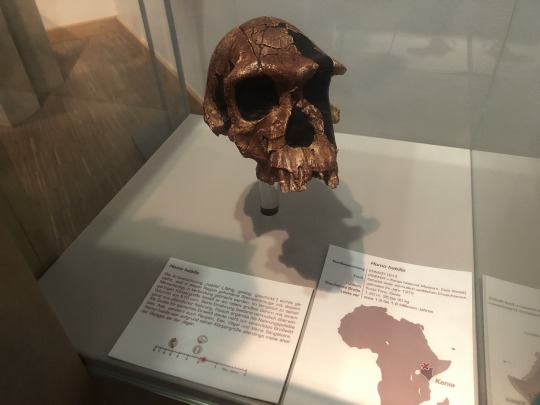

Homo habilis, the 'handy man', named that way because when they were discovered they were thought to be the first humans who used tools. Since then, Australopithecus tools have been found, and tool use by many different animals has also been documented.
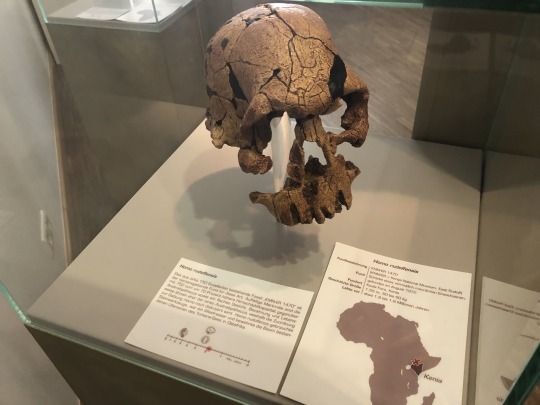

Homo rudolfensis, a population of humans who lived at the same time as Homo habilis and were notably bigger and a little brainier. Does it warrant being its own species? That depends who you ask. Splitting vs lumping is a point of contention in almost every group's biology, and it can run especially high in the field of human evolution since hominins are A very high profile and important fossils that directly relate to our own origins, and B an extremely tangled group that seems to have produced loads and loads of isolated populations and subspecies that regularly migrated all over the place and had frequent interbreeding events. Personally I tend to come down on the side of lumping them into a few major species.


Paranthropus boisei. These were basically a separate lineage of australopithecines, quite different from our own ancestors, who continued to do australopithecus things until quite recently. They were very good climbers and seem to have returned to the trees.

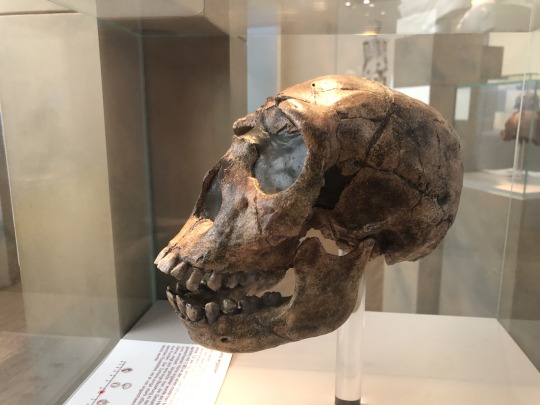
Homo ergaster, either a close relative or a synonym of the more famous Homo erectus. This is the point where we got really brainy, probably figured out how to make fire ourselves, and spread from Africa to Eurasia.

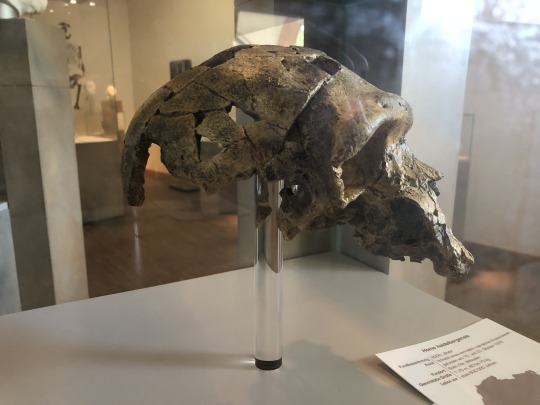
Homo heidelbergensis. Homo erectus and its many subspecies spread all over Africa and Eurasia and existed for well over a million years. As time marches on and evolution did its thing, we eventually start calling the ones in Africa Homo heidelbergensis. They were quite tall, positively enormous compared to little Lucy a few million years back, and they too joined in the human migrations out of Africa. From the H. heidelbergensis who moved into Eurasia we eventually get neanderthals and denisovans, while Homo sapiens evolved from the heidelbergensis populations in Africa.
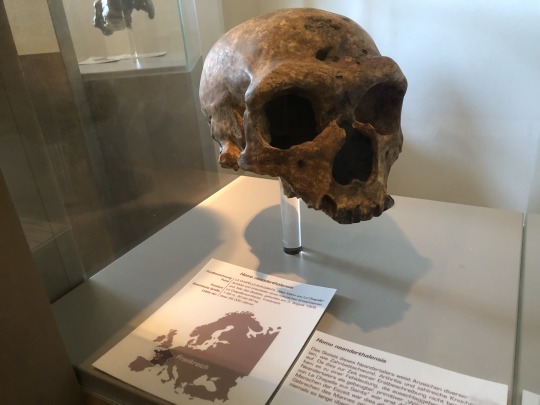

And there's the neanderthals! Large-brained and creative (the first known cave paintings belong to them and they buried their dead), they were likely quite different from the brutish image we often get from them. Rather than truly dying out, their populations eventually merged with the larger Homo sapiens population once they migrated out of Africa, leaving our modern genes with a couple percent neanderthal DNA.
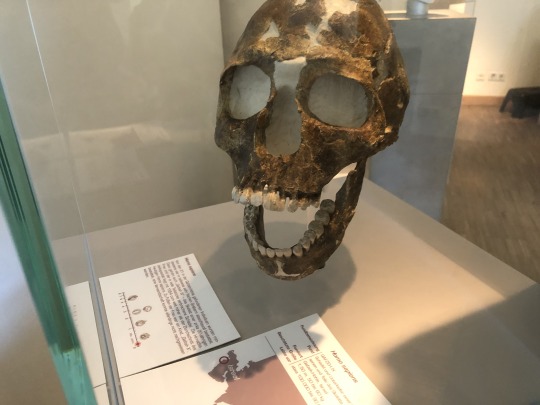
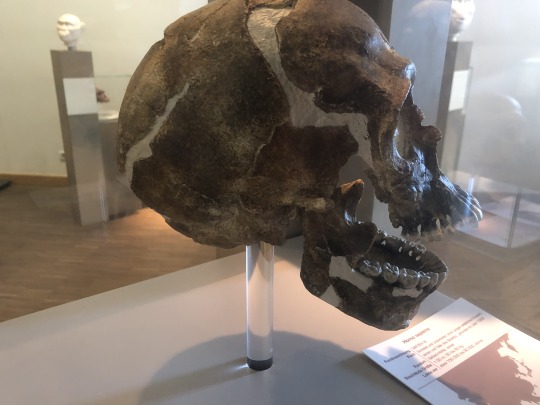
Homo sapiens. And that's us! Not so much the last remaining branch of the human family tree as much as several of the separate branches ended up coming back together and weaving into a single bigger branch.
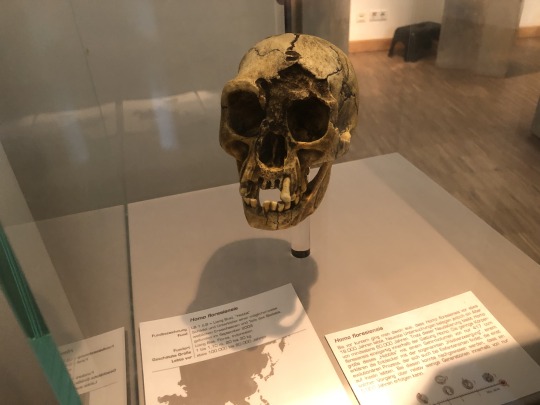

And then there's these little guys, Homo floresiensis! Probably originating from a Homo erectus population that ended up on the island Flores, insular dwarfism ended up making them grow quite tiny. On their isolated island, they remained until about 50000 years ago.
#human evolution#sahelanthropus#ardipithecus#australopithecus#homo#ape#primate#mammal#neogene#quaternary#palaeoblr#senckenberg museum#vicky's vritings
342 notes
·
View notes